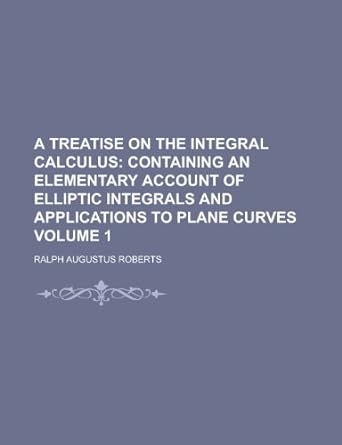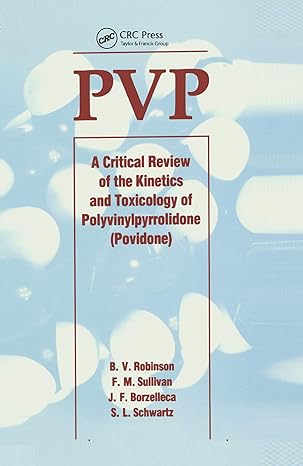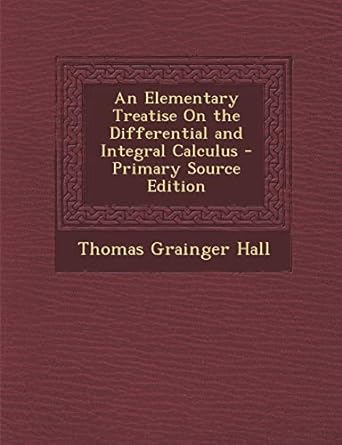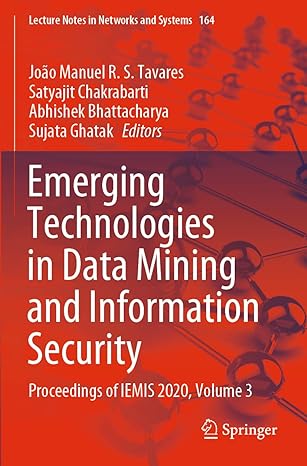Go back


A Treatise On The Integral Calculus Volume 1(1st Edition)
Authors:
Ralph Augustus Roberts

Cover Type:Hardcover
Condition:Used
In Stock
Include with your book
Free shipping: April 16, 2024Popular items with books
Access to 3 Million+ solutions
Free ✝
Ask 10 Questions from expert
200,000+ Expert answers
✝ 7 days-trial
Total Price:
$0
List Price: $70.51
Savings: $70.51(100%)
Book details
ISBN: 1230101632, 978-1230101637
Book publisher: RareBooksClub.com
Get your hands on the best-selling book A Treatise On The Integral Calculus Volume 1 1st Edition for free. Feed your curiosity and let your imagination soar with the best stories coming out to you without hefty price tags. Browse SolutionInn to discover a treasure trove of fiction and non-fiction books where every page leads the reader to an undiscovered world. Start your literary adventure right away and also enjoy free shipping of these complimentary books to your door.
A Treatise On The Integral Calculus Volume 1 1st Edition Summary: This historic book may have numerous typos and missing text. Purchasers can usually download a free scanned copy of the original book (without typos) from the publisher. Not indexed. Not illustrated. 1887 edition. Excerpt: ...= pds/2, where ds is the element PQ of the arc in Fig. 13, and ds = dr sec p, sin = p/r, where p is the angle PQP', namely, the angle which the radius vector makes with the curve. If we put p = r sin p in the above, we get 8=ijrta.njdr. (10) These formulae are of considerable use in cases in which the curve is such that p and r are connected by a simple relation. For example, let us consider the involute of the circle. Let P be a point on the involute, then the tangent PT to the circle is the normal to the curve; so that we have p2 = r'-a2, where OQ =p, OP = r, OT = a. p if the area be measured from the line OA, where A is the point where the involute meets the circle. Examples. 1. Show that the sectorial area of the curve r = a + b sin /, measured from a tangent drawn from the origin, is ab sin2 cp + V1 (/-sinp cos p). 2. Show that the sectorial area of the curve r1 = a2 + £' sin /, measured from a tangent drawn from the origin, is £J'sW40. 3. To find the area of the epicycloid. In this case, we have r + (m + 1)' gives r' = aW9+8±sin2fl, S= / ' sin29 (m--l)3 J =-7 r£j-(9-sin f l cos 9), (m--iy if the area be measured from the fixed circle. Hence, taking e = x, we find that the area between the curve and the radii vectores to two consecutive cusps is m (m + 1) xa2 (m-l)3 147. "We now proceed to consider the area of the general cubic, and shall show that in all cases it can be expressed by means of no higher transcendents than elliptic integrals. Let us take the axis of y parallel to the real asymptote which the cubic must always have, then it is shown in treatises on curves or the Differential Calculus that the cubic can be written y1 (ax + b) + y (aV + b'x + c') + o'V + V + c"x + d"-0. (11)...
Customers also bought these books
Frequently Bought Together
Top Reviews for Books
Request o2pu6ip
( 4 )
"Delivery was considerably fast, and the book I received was in a good condition."










